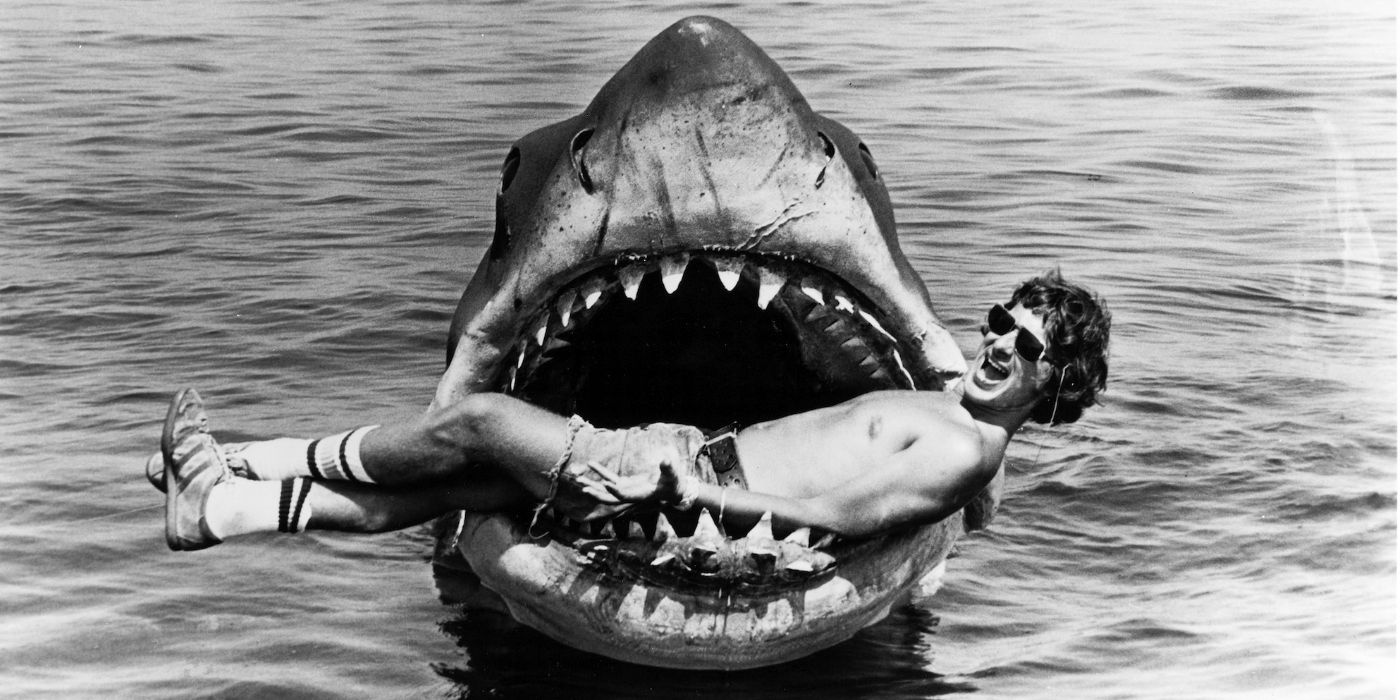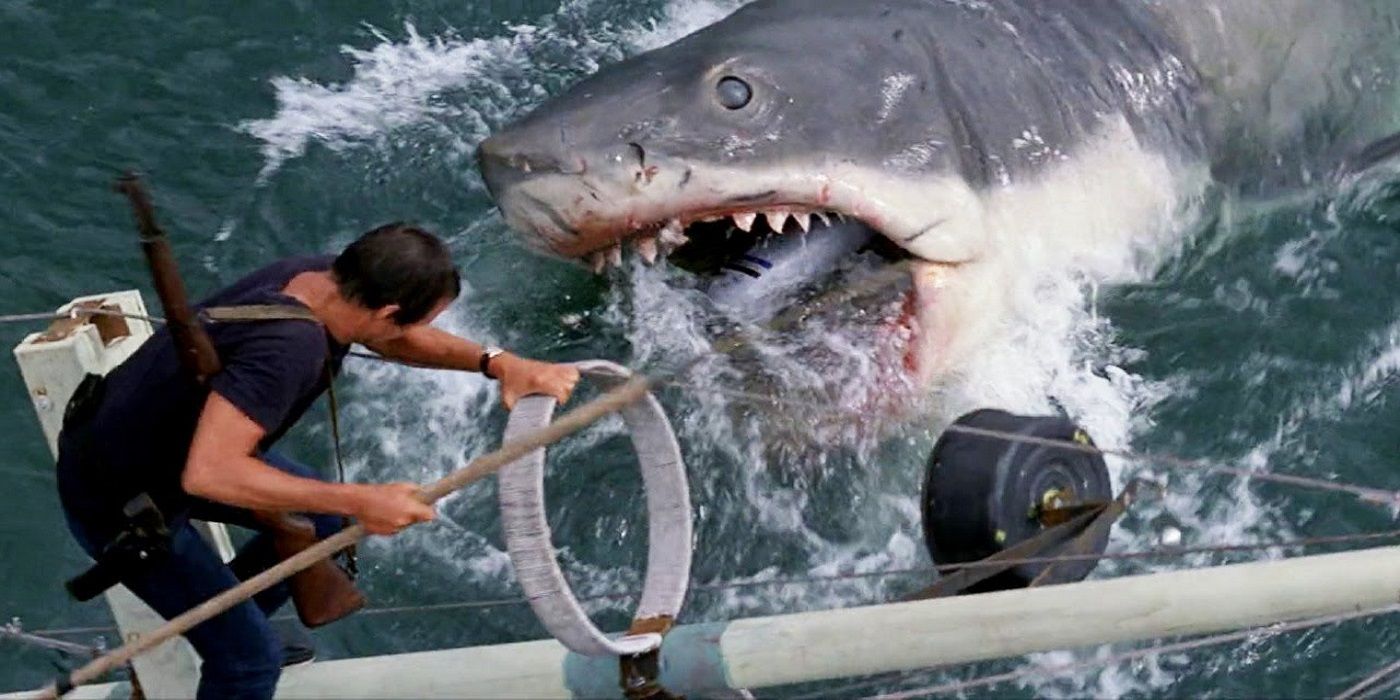One of the most notable and influential aspects of Steven Spielberg's groundbreaking blockbuster thriller Jaws is the fact that the terrifying beast that is the focus of the movie is unseen for most of the film's running time. However, this type of approach, which would inspire countless horror films in later years, was because the mechanical shark was a nightmare to operate. Without a working shark, Spielberg was forced to come up with an alternative method to enhance the terror and suspense of the film, and so a horror technique was perfected.
Even though the great white shark is mostly hidden underwater throughout the movie, Spielberg builds suspense by using creative camera techniques and John Williams' simple yet ominous score. The movie's opening scene is one of cinema's most famous, a POV shot of something swimming through the shallow waters before it spots an unsuspecting beach partier and pulls her underneath. This moment establishes the type of terror that dominates the rest of the movie, a creeping dread about what lies below the sea even as beachgoers enjoy their time in the surf.
Spielberg hints at the size of the shark by showing only parts of the entire creature. A dorsal fin zipping through the water, or a shadow appearing just under the surface. When the great white does finally get revealed in the film's action-packed climax, Spielberg still holds back from showing too much detail. The barrels that Quint attaches to the predator serve as a way for both him and the audience to track the shark's movements, as well as a way for the director to minimize the budget and the usage of the faulty shark animatronic.
Jaws' Malfunctioning Shark Led to a Horror Masterpiece
Jaws was already having a troubled production even before the technical disasters started happening. The script was still undergoing revisions at the time of shooting, while executives worried about the costly budget under the direction of, at the time, a little-known and unproven filmmaker. However, it was the salty waters off the coast of Martha's Vineyard which served as the straw that broke the mechanical shark's back.
Spielberg had, in fact, commissioned three different models of the great white, all affectionally nicknamed "Bruce", but none of them worked properly or looked totally and convincingly real. When the crew lifted Bruce down into the Nantucket Sound, he immediately sank to the bottom as his handlers realized with an impending sense of dread that they had only tested the shark animatronic in freshwater. It turns out that the saltwater corroded both the inside and outside of the creature and seeped into the pneumatic hoses, rendering Bruce nigh impossible to operate.
As the budget quickly inflated, Spielberg was reportedly afraid he would never work in Hollywood again. However, the pressure forced him to ingeniously hint at the presence of the monster instead of showing it off in full detail. Spielberg ultimately credited the "great white turd", as he frustratingly called Bruce, with the terrifying impact of the film's final cut, as he explained:
"The film went from a Japanese matinee horror flick to more of a Hitchcock, the-less-you-see-the-more-you-get thriller."
Spielberg surmounted pressure to hone some of the most influential filmmaking techniques and become one of the most celebrated directors in the business, inspiring countless filmmakers with Jaws just as his hero Alfred Hitchcock had inspired him.


